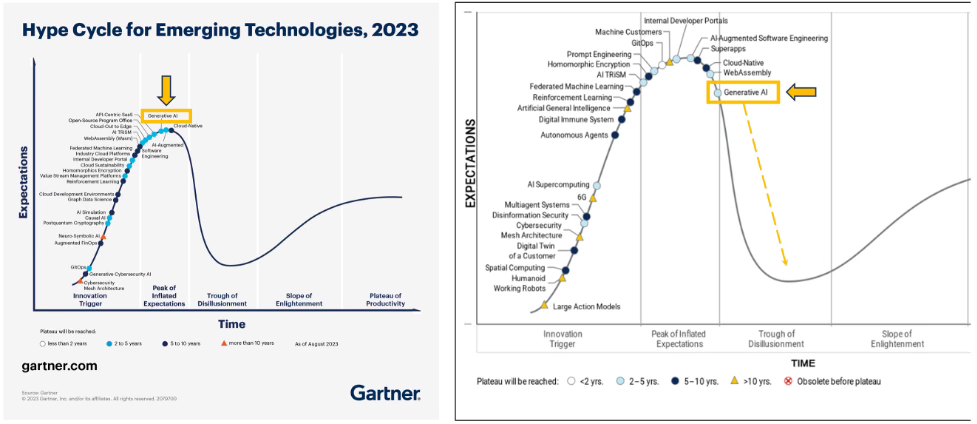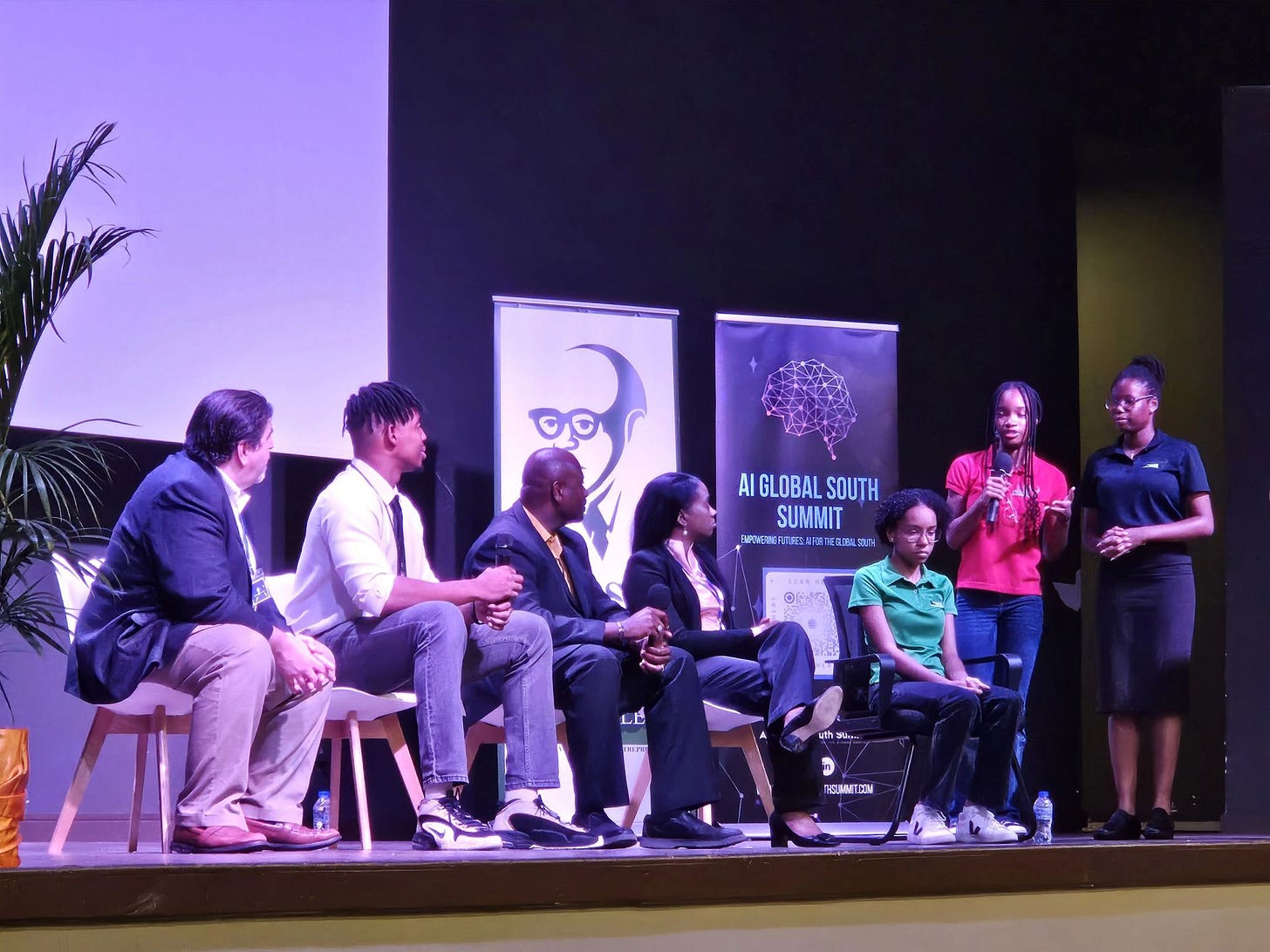I spent last week as a participant, speaker, and panelist at the inaugural AI Global South Summit in St. Lucia. The brainchild of Dr. Gale Rigobert and Kem-Laurin Lubin, the Summit—on paper—brought together experts from around the region and the world to discuss and explore innovative strategies for preserving and monetizing St. Lucia and the region’s cultural assets by leveraging AI and other emerging technologies.
In reality, the Summit did much more: it was a catalyst for creating new networks of people to share their thinking about how artificial intelligences and other emerging technologies might be aligned and used not just to reshape education, business, and governance, but also help us redefine our sense of and relationships with the past and our presents.
The Future is Now
When I first started talking with Dr. Rigobert and Kem about speaking at the conference, I (naively) suggested a talk on “Looking Past Today’s AIs: What Next?”
At the time, Bill Gates in an interview suggested that there were “…probably two more turns of the crank on scaling” LLM-based generative AIs and that the industry needed to think more in terms of metacognition, where AIs are better able to think about problems. The notion that we are somehow running of data continued to be part of the public discourse on AI (an assertion that I reject).
In preparing for my talk, I found that AI is still evolving so quickly that anything that any predictions likely would be irrelevant by the time I presented my thoughts.
During my preparations, I found that I kept returning to Gartner’s Hype Cycle: in 2023, we were assailed by the promise of AI from the Peak of Inflated Expectations. One year on? We had started the inevitable descent down into the Trough of Disillusionment.

When I stepped back and thought about this, I realized that the descent into the Trough of Disillusionment is an opportunity: disillusionment comes from a mismatch between our expectations and the current reality. What comes next with AI is not nearly as important as what we can do with AI right now.
At the Summit, Dr. Rigobert said, “AI levels the playing field.” This might seem counter-intuitive as that companies like OpenAI, Anthropic, Google, and Microsoft dominate AI's development. Their work, however, has lowered many of the barriers to (digital) innovation.
Reconsidering Our Relationships with AI
The Summit started with the question “How will we ensure that AI serves humanity?”
Among the people I was sitting with, our initial response was fairly negative: we had little hope or expectation that AI’s major players would put humanity’s needs ahead of their businesses’ (and their businesses’ investors’) desire for greater market share (or greater profit).
The tenor of the conversation changed when we stopped thinking in terms of the entirety of Humanity, and started thinking more in terms of what could we, as people and groups of people, do with AI to support, enable, and empower our local and decentralized communities.
Rather than trying to “boil the ocean” of finding ways to serve Humanity with AI, we were drawn to the idea of what it might look like if we used AI to help us make “good cups of tea” that spoke to local needs, aspirations, and sensibilities. An example from the Summit was looking at how AI might be used to help preserve and promote Saint Lucian Creole: the application was not universal but it spoke to a core element of Saint Lucia’s culture and history.
While there are numerous reasons to be concerned about how AIs are being designed, developed, used, and misused, we have named and framed those concerns in ways that allow us to start laying the foundations for, if not building, more exciting and useful possibilities.
To do this, we need to stop thinking of AI as a solution and start thinking of it as a tool that empowers us to rapidly and inexpensively create the services and resources that don’t exist but are needed.
Step 1: Let’s Change How We Talk
I am often struck by are the number of “AI will…” statements.
AI is not independent of humanity: it is a product of humanity. Today’s AIs won’t do anything: imaginative, innovative creative people finding novel applications for AI will.
Yes, a small number of companies exert outsized influence in the space and yes, LLMs dehumanize the brilliance of human insight and imagination by relying on statistics to mimic human intelligence…but I still see a sea of opportunities.
If we want AIs to be more supportive of our personal, communal, and collective aspirations, the first step is being much more specific in the language we use to talk about AIs and their applications. “AI will…” statements need to give way to “I (or we) want to use AI (and other machine learning techniques) to [do this thing].”
Getting From Here to There
At the Summit, I asked how many participants were developers. One person raised their hand.
I then asked two questions:
How many people had sketched out an idea on a piece of paper, a whiteboard, or using Microsoft PowerPoint and
How many people had used a keyboard.
Everyone raised their hands.
The ability to sketch out and describe an idea is the minimum we need to start using AI as a tool that will help us bridge the Trough of Disillusionment.
Based on what I saw and heard at the Summit, we should be seeing a flurry of exciting, experimental, and innovative projects that start with “Let me show you this thing I / we built with AI.”

Will these efforts be “perfect”? No. Of course not…but they will teach us more about how we might in practice align expertise, experience, information, code, and algorithms, and information to prototype futures that better speak to what our communities, be they next door or dispersed around the world, need to thrive.



Thank you, Dennis, for capturing the spirit and deeper purpose of the AI Global South Summit so well. Your emphasis on viewing AI as a means to amplify local voices and preserve cultural heritage resonates deeply. The idea of using AI to protect and promote aspects of Saint Lucian identity, like Creole language, shows just how powerful and transformative this technology can be when guided by local needs and aspirations. It’s a reminder that AI’s true potential lies in empowering communities to tell their stories and shape their futures. Looking forward to seeing these ideas take shape.
You are always on point.